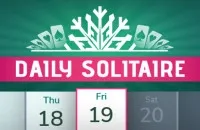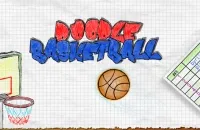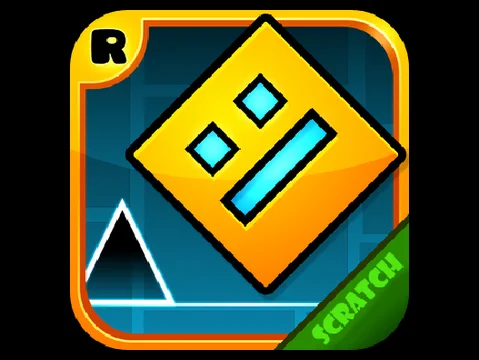Solitaire
Solitaire
Connecting to game server...
0% complete

Solitaire
Click to start playing
🕹️ You May Also Like












Solitaire
The timeless card game classic requiring strategy and patience to build foundation piles from Ace to King. Move cards between columns and clear all cards.
Solitaire is the timeless single-player card game that has entertained millions. Build four foundation piles from Ace to King in each suit by strategically moving cards between tableau columns. The game requires planning, strategy, and a bit of luck to successfully clear all cards. This digital version maintains the classic rules while offering smooth gameplay and helpful features.
🎮 How to Play
- 1Click to select cards
- 2Drag cards to move them
- 3Double-click to auto-move to foundation
💡 Game Tips
- 💡Uncover face-down cards as priority
- 💡Build tableau columns in alternating colors
- 💡Don't rush to move cards to foundations
- 💡Plan several moves ahead when possible
📚Complete Strategy Guide
Master Solitaire with our comprehensive guide and pro tips
Basic Strategy
Solitaire is the timeless single-player card game that has entertained millions through its perfect balance of skill, strategy, and luck. The objective is to build four foundation piles from Ace to King in each suit by strategically moving cards between tableau columns. Success requires planning ahead, understanding card relationships, and making calculated decisions about when to reveal hidden cards versus when to build existing sequences.
Foundation Building Priority: The ultimate goal is completing four foundation piles (one per suit) from Ace to King. However, rushing to move cards to foundations isn't always optimal. Sometimes keeping cards in play provides more strategic options for uncovering hidden cards and building sequences.
Tableau Management: The seven tableau columns are your primary workspace for building descending sequences in alternating colors. Effective tableau management involves creating empty columns (which can hold any King), maintaining access to buried cards, and building sequences that maximize your options.
Hidden Card Strategy: Approximately half of the deck starts face-down in tableau columns. Your primary strategic focus should be revealing these hidden cards, as they often contain the keys to completing the game. Prioritize moves that flip over new cards rather than just organizing existing face-up cards.
Sequence Building Logic: Build tableau sequences by placing cards in descending order with alternating colors (red on black, black on red). Longer sequences can be moved together, so building extended sequences creates powerful tools for reorganizing the tableau and accessing buried cards.
Advanced Tips
Empty Column Management: Empty tableau columns are extremely valuable because they can accept any King, providing flexibility for reorganizing sequences. Don't fill empty columns immediately; consider whether keeping them open provides better strategic options for future moves.
King Placement Strategy: Kings can only be placed in empty columns or on Queens, making their placement crucial. Don't move Kings to empty columns unless you have a clear plan for building on them or unless doing so reveals important hidden cards.
Stock Pile Optimization: When drawing from the stock pile (typically three cards at a time in standard rules), pay attention to the order of available cards. Sometimes cycling through the stock multiple times reveals better play sequences.
Suit Separation Planning: While building foundation piles, consider the impact on your tableau sequences. Removing a card that's part of a long sequence might hurt your ability to move other cards later in the game.
Multiple Move Visualization: Before making any move, visualize the chain of moves it enables. The best moves often create cascades of additional opportunities rather than just solving immediate problems.
Klondike Solitaire Mastery
Opening Analysis: At the start of each game, survey the entire tableau to identify immediate opportunities and potential problem areas. Look for Aces and low cards that can be moved to foundations quickly, and identify Kings that might be blocking important sequences.
Column Priority System: Develop a system for prioritizing which columns to work on first. Generally, columns with fewer face-down cards or columns where the face-up cards create immediate building opportunities should receive priority attention.
Stock Management Strategy: Master the timing of when to cycle through the stock pile versus making tableau moves. Sometimes it's better to exhaust tableau options before drawing new cards, while other times fresh cards from stock provide the key to unlocking tableau sequences.
Undo Strategy Philosophy: In digital versions that allow unlimited undos, develop a strategic approach to using this feature. Use undos to explore different sequences and learn about optimal play patterns rather than just correcting obvious mistakes.
Advanced Pattern Recognition
Blocking Pattern Identification: Learn to quickly identify when cards are blocking each other in ways that make the game unwinnable. Common blocking patterns include essential cards being buried under long sequences of the same color or critical foundation cards being trapped.
Sequence Mobility Assessment: Evaluate how easily tableau sequences can be moved and reorganized. Long sequences of alternating colors provide more mobility than shorter sequences or sequences of the same color.
Foundation Timing Strategy: Master the decision of when to move cards to foundations versus keeping them in play. Cards in foundations become unavailable for tableau building, so sometimes the strategic choice is to delay foundation moves.
Hidden Card Probability: Develop intuition about what cards are likely to be hidden in face-down positions based on what's already visible. This probabilistic thinking helps guide strategic decisions about which columns to prioritize.
Win Rate Optimization
Statistical Understanding: Understand that Klondike Solitaire has a theoretical win rate of approximately 79% with perfect play, though practical win rates are typically much lower. This knowledge helps set realistic expectations and reduces frustration.
Mistake Pattern Analysis: Track your common failure patterns to identify areas for improvement. Do you lose because you don't plan ahead? Do you make poor King placement decisions? Self-awareness accelerates improvement.
Decision Point Recognition: Learn to recognize crucial decision points where one choice leads to victory and another leads to failure. These pivotal moments often involve empty column management or stock pile timing.
Patience vs. Aggression Balance: Find the optimal balance between patient planning and aggressive play. Over-analysis can lead to missed opportunities, while impulsive play often leads to unwinnable positions.
Variant Game Strategies
Spider Solitaire Adaptation: When playing Spider Solitaire, focus on building complete sequences from King to Ace in the same suit. Empty columns become even more valuable, and suit management becomes the primary strategic concern.
FreeCell Approach: In FreeCell, where all cards are face-up, focus on creating empty free cells and columns to maximize card mobility. Planning becomes more important since you can see all cards from the beginning.
Pyramid Solitaire Tactics: For Pyramid variants, focus on removing cards that free up the most additional removal opportunities. Strategic thinking centers around maximizing access to buried cards.
Mental Game and Focus
Concentration Maintenance: Solitaire requires sustained attention to detail over extended periods. Develop techniques for maintaining focus, especially during longer games that require careful planning.
Frustration Management: Learn to handle the inevitable frustration of unwinnable games or games lost due to poor decisions. Maintaining emotional equilibrium improves decision-making quality.
Pattern Learning Psychology: Understand that expertise comes from recognizing patterns and positions that repeat across different games. Build a mental library of successful position types and strategies.
Perfectionism Balance: Strive for improvement without demanding perfection. Even expert players lose winnable games, and learning from failures is part of the improvement process.
Digital vs. Physical Play
Interface Optimization: In digital versions, master the interface elements like auto-complete features, undo functions, and hint systems. These tools can accelerate learning when used strategically.
Score System Understanding: Different digital implementations use various scoring systems. Understanding how points are awarded can influence strategic decisions, especially in competitive contexts.
Accessibility Features: Take advantage of accessibility features like large cards, high contrast modes, or audio cues that can improve your playing experience and performance.
Competitive and Speed Play
Speed Optimization: For timed play, develop efficient click patterns and keyboard shortcuts. Speed solitaire rewards both strategic thinking and mechanical efficiency.
Tournament Preparation: Competitive solitaire often involves playing multiple games quickly. Practice maintaining strategic thinking under time pressure and develop consistent opening strategies.
Ranking System Navigation: Understand how different platforms calculate rankings and adapt your strategy accordingly. Some systems reward win rate, others prioritize speed, and some balance multiple factors.
Conclusion: Mastering Solo Card Strategy
Solitaire represents the perfect single-player strategy game, combining elements of puzzle-solving, pattern recognition, and strategic planning. Its enduring popularity stems from the satisfying blend of skill and chance, where good strategy significantly improves outcomes while maintaining enough randomness to keep games interesting.
Mastery comes through developing both tactical skills (recognizing immediate opportunities) and strategic thinking (planning several moves ahead). The game rewards patience, careful observation, and the ability to balance competing priorities in resource management.
Whether you're playing for relaxation, mental exercise, or competitive achievement, solitaire provides a rich strategic experience that rewards careful thought and systematic improvement. The cards are shuffled and waiting—will your strategy lead to victory?
Level Walkthrough
Opening Assessment: Begin each game by analyzing the initial tableau layout. Identify immediately available moves, note which columns have the most hidden cards, and spot any Aces or low cards that can start foundation piles.
Early Game Priorities: Focus on moves that reveal hidden cards, especially in columns with many face-down cards. Don't rush to build foundations unless doing so opens up significant new opportunities.
Mid-Game Development: Once you've revealed several hidden cards and established some sequences, start thinking more strategically about foundation building and sequence optimization. Look for opportunities to create empty columns.
Late Game Execution: With most cards revealed, focus on efficient sequence manipulation to complete foundation piles. This often requires careful planning to ensure you don't block essential moves.
Endgame Precision: The final moves often require precise sequence manipulation to extract specific cards needed for foundation completion. Take time to plan these moves carefully to avoid getting stuck.
Common Mistakes
Premature Foundation Building: Moving cards to foundation piles too early can limit your options for tableau manipulation. Only build foundations when it doesn't hurt your ability to make other necessary moves.
Wasting Empty Columns: Filling empty columns immediately with any available King wastes their strategic value. Keep empty columns available until you can use them productively for sequence reorganization.
Short-Term Thinking: Making moves that solve immediate problems but create bigger problems later is a common error. Always consider the long-term implications of your moves.
Ignoring Hidden Cards: Focusing too much on organizing visible cards while ignoring opportunities to reveal hidden cards often leads to unwinnable positions. Hidden cards should be your primary priority.
Stock Pile Mismanagement: Not paying attention to the order and cycling of stock pile cards can cause you to miss important opportunities or make suboptimal plays.
Score Optimization
Move Minimization: Completing games with fewer moves demonstrates efficient strategy and forward planning. Focus on moves that accomplish multiple objectives rather than single-purpose moves.
Time Efficiency: Faster completion times show both strategic skill and decision-making speed. However, don't sacrifice strategic thinking for speed, as hasty moves often lead to unwinnable positions.
Win Rate Maximization: Achieving higher win percentages requires consistent application of good strategy rather than relying on luck. Track your performance to identify patterns in your strategic approach.
Streak Building: Winning multiple consecutive games demonstrates reliable strategic skills rather than occasional good fortune. Develop consistent approaches that work across different layouts.
Difficulty Mastery: Some solitaire variants offer different difficulty levels or rule variations. Mastering harder variants shows advanced strategic thinking and adaptability.
Final Pro Tips
Pattern Recognition: Develop recognition of common card patterns and layouts that indicate good or poor winning chances. This helps you identify when to restart versus when to persist with challenging games.
Undo Feature Usage: If playing digital versions with undo features, use them strategically to explore different move sequences rather than just correcting mistakes. This helps you learn optimal play patterns.
Variant Exploration: Try different solitaire variants (Spider, FreeCell, Pyramid) to develop broader strategic thinking skills that can improve your standard Solitaire play.
Mental Patience: Solitaire rewards patient, thoughtful play over hasty decisions. Develop the mental discipline to analyze positions thoroughly before committing to moves.
Layout Analysis: Spend time at the beginning of each game analyzing the complete layout to identify potential problems and opportunities before making your first move.
Sequence Planning: Learn to visualize long sequences of moves rather than just the immediate next move. The best solitaire players think several moves ahead.
Statistical Awareness: Understand that not all solitaire games are winnable with perfect play. Don't get frustrated by occasional unwinnable layouts; focus on playing winnable games optimally.
Relaxation Benefits: Use solitaire as a mental break or stress relief activity. The game's meditative qualities can provide psychological benefits beyond entertainment value.
Solitaire represents the perfect single-player card game experience, combining elements of skill, strategy, and chance in a format that provides both quick entertainment and deep strategic challenges through its elegant rules and infinite variety of layout possibilities.